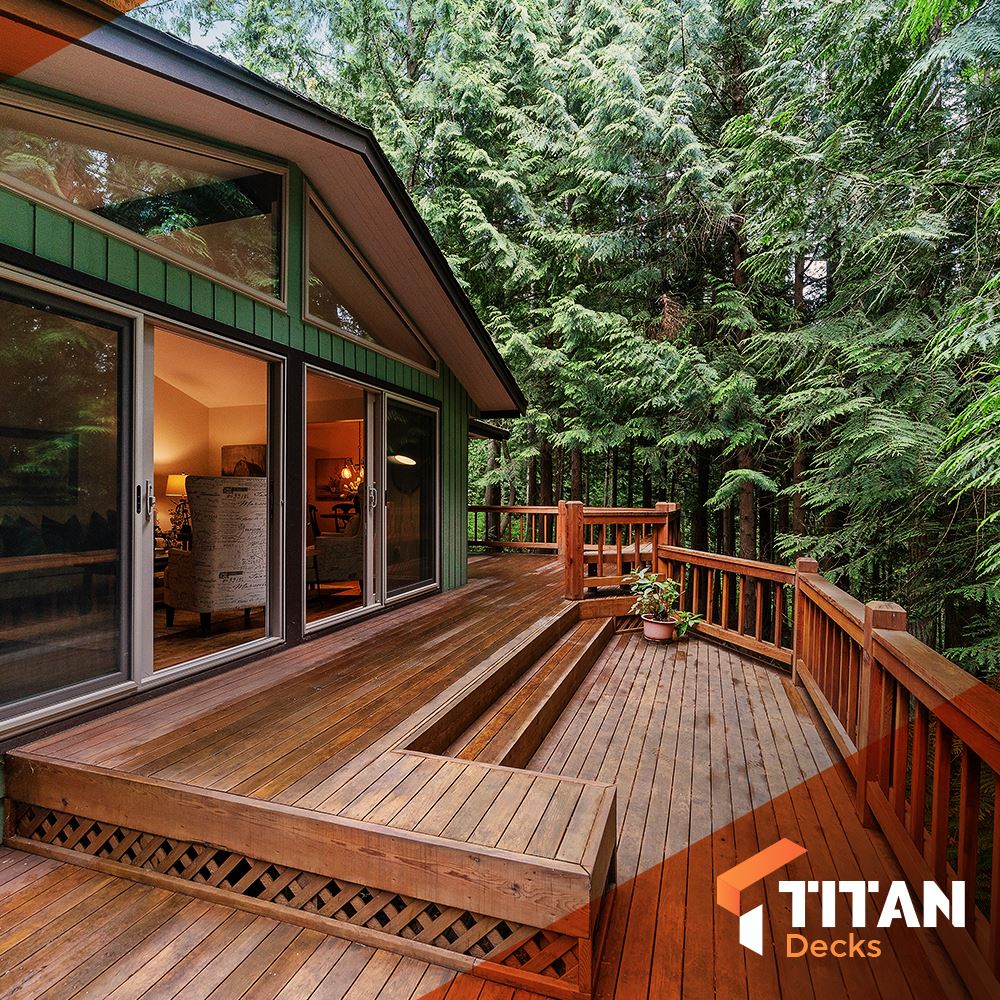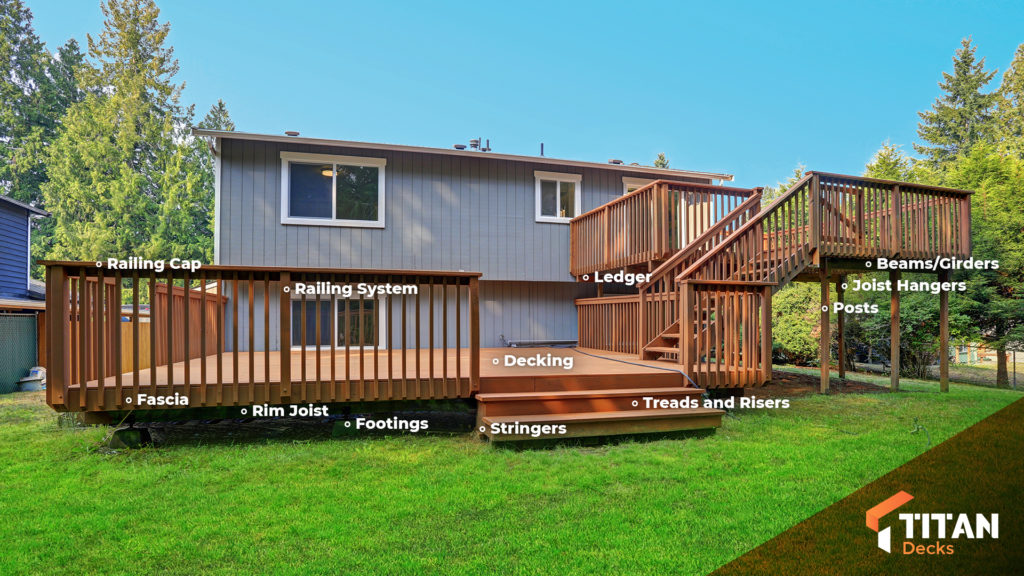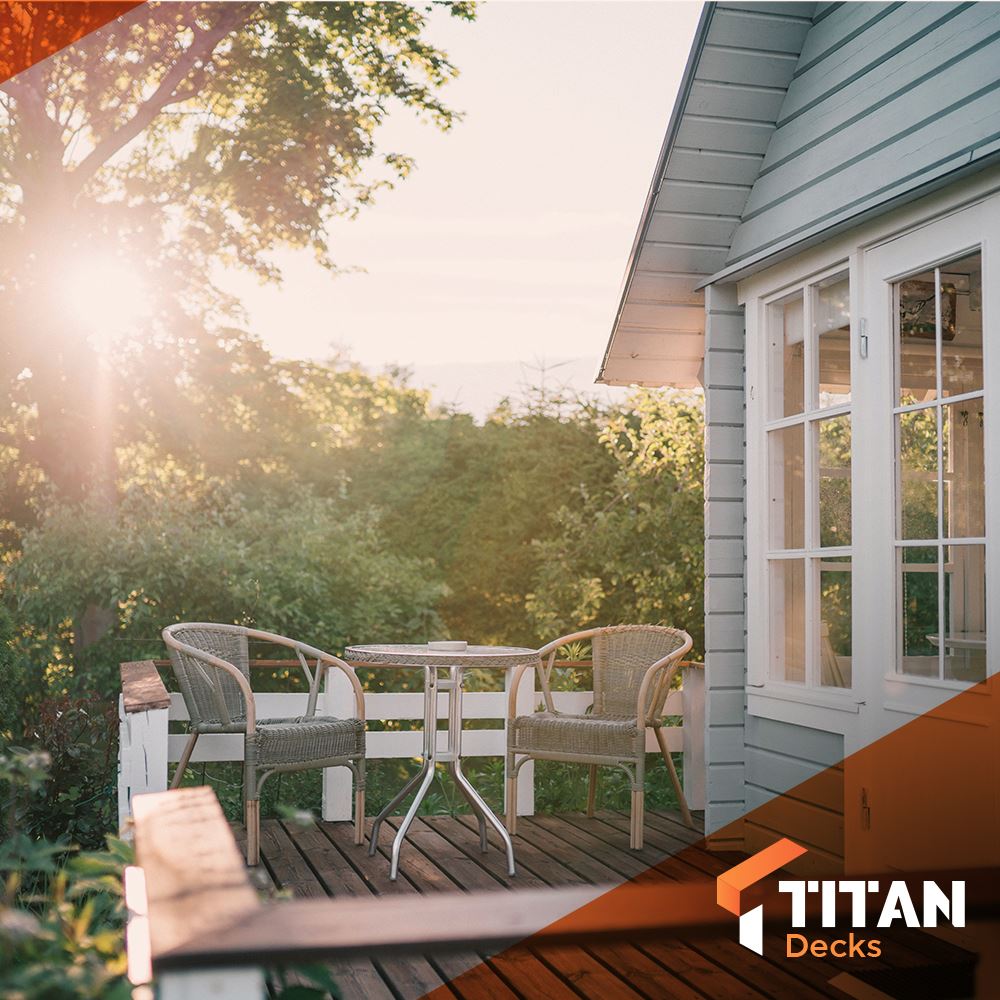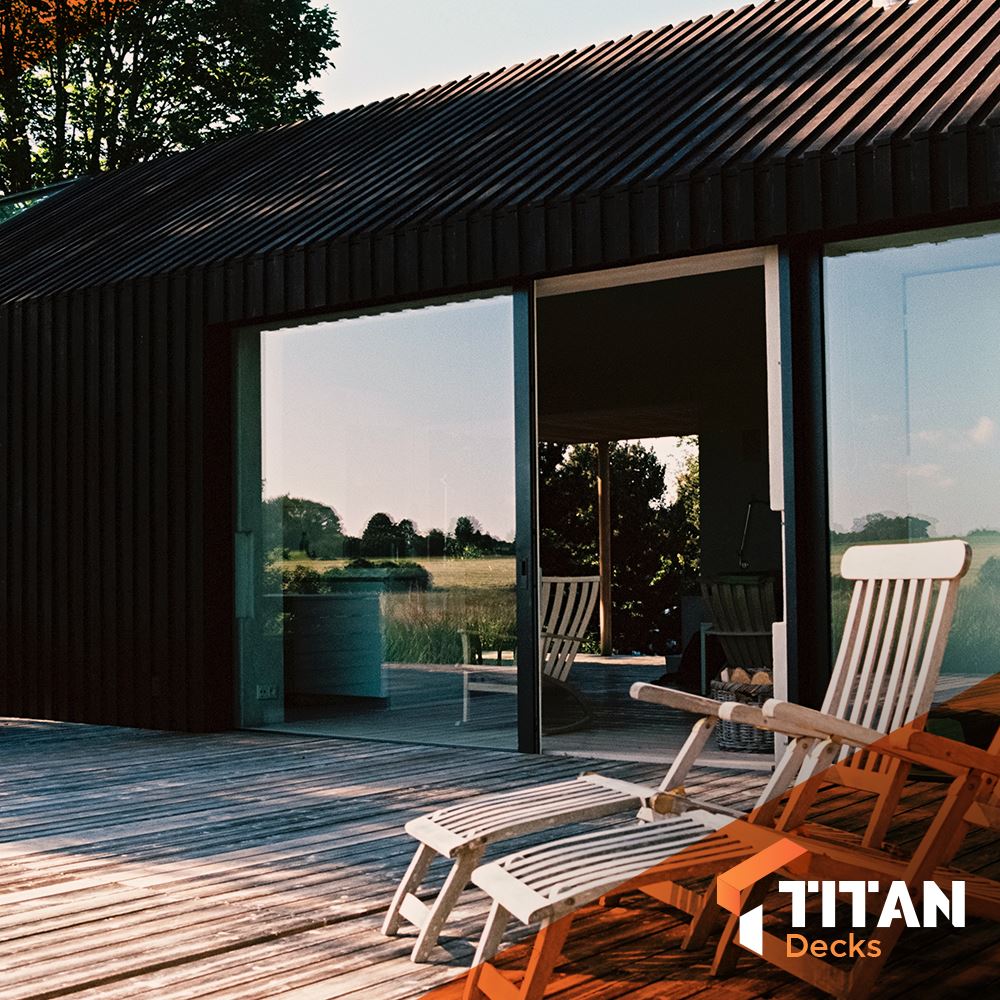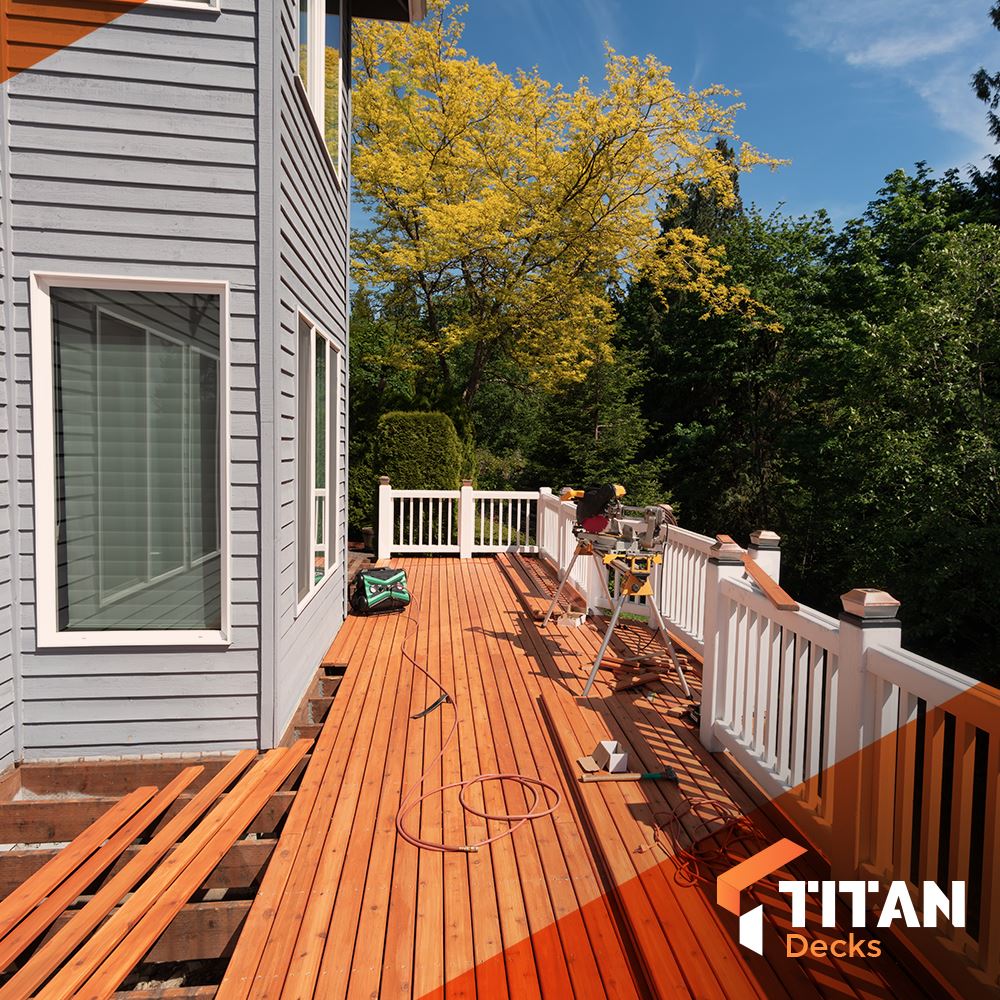Guess what? You absolutely do not have to wait till spring to have your new deck built. Would you believe us if we told you that winter was actually the perfect time to build your deck? It is! Hear us out. We’re going to present some compelling evidence why you should consider having your deck built this winter.
Build Your Deck In The Winter To Get A Head Start On Spring
Getting your deck built during the winter means, when spring comes, you can start using it immediately. And you won’t even have to wait for appointment availability or worry about finding a contractor who is able to take on your project.
Not to mention, winter is a sort of off time for deck builders. This is beneficial for you because you’ll have more options when it comes to finding the right contractor for your decking project.
Save Some Money
Many contractors offer winter build incentives. Take Titan Decks, for example. We’re giving you 15% off your deck if you choose to build during the winter. It’s a win-win for both of us. You’re helping us keep our employees working, and we’re helping you get the deck you want at a discounted price.
A Winter Deck Build Will Get Your Project Done Faster
Warmer months are much busier for builders. Their schedules fill up quickly. Many deck builders have an 8-10 week wait to start a project in the spring and summer months.
Depending on the size of your deck, building during the winter may only have a 4-6 week completion time.
Pulling Permits Will Be Quicker
Winter is a quiet time for builders, which means it’s equally quiet for your city office. Turn around time for permits during the spring and summer can take weeks. But, during the winter, the wait time is cut much shorter.
Have We Convinced You?
So you see, it’s faster and cheaper to have your deck built in the winter. And, you’ll have so much more time to enjoy your deck once the weather warms up. Come March, you’ll completely miss the rush of people clamoring to get their deck built.
To build your deck this winter, you can contact us to schedule your free estimate. As we mentioned earlier in this article, we are taking 15% off any new deck build scheduled between November and February so act now, our slots are already filling up and we don’t want you to miss out on this great offer. Financing options are available.

